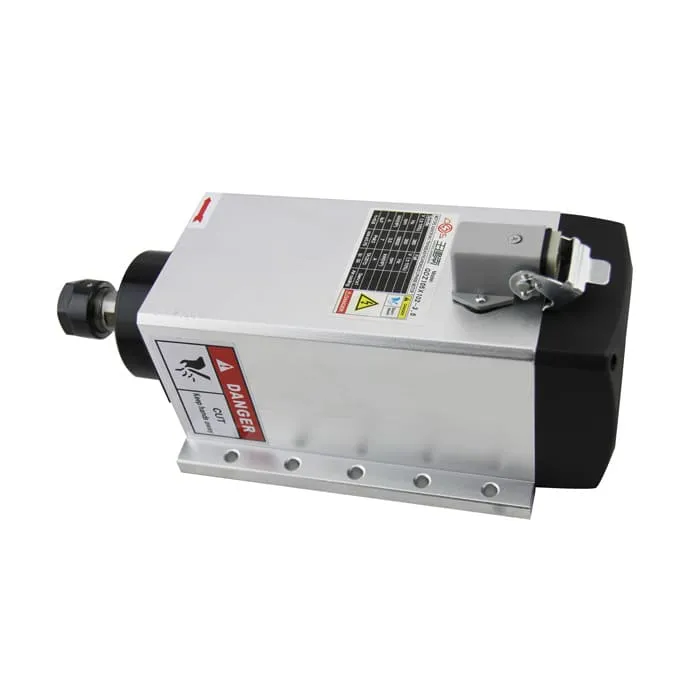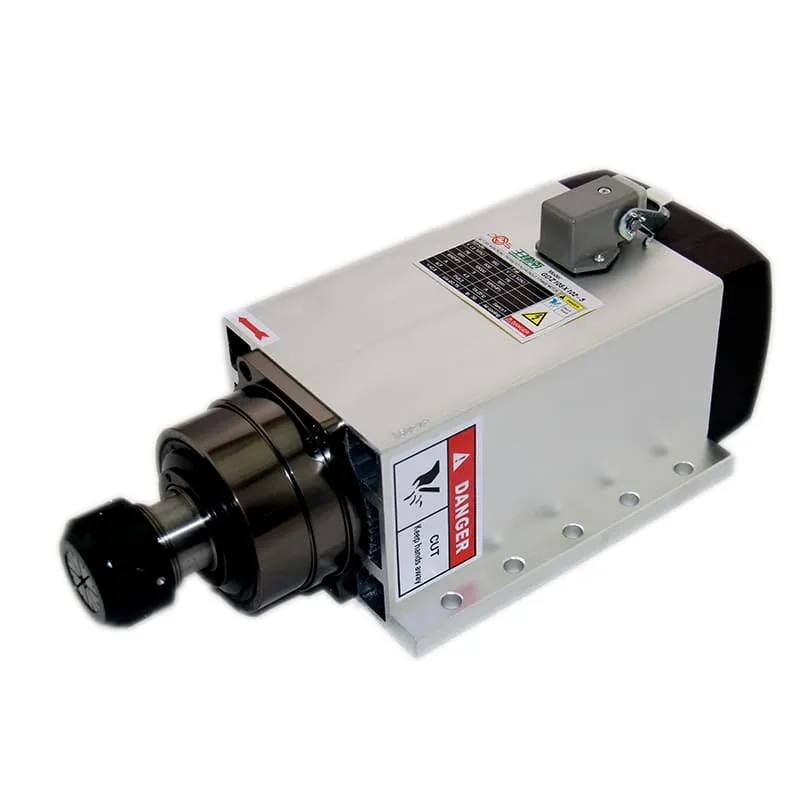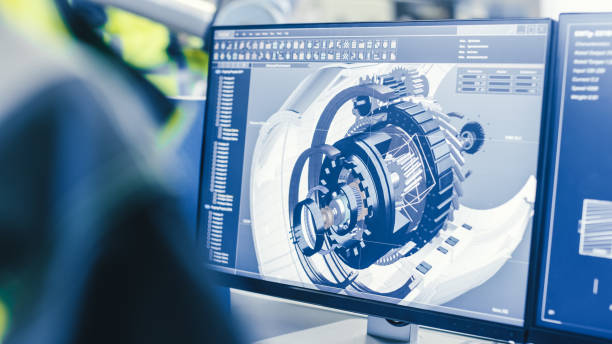How to Design for CNC
Designing for CNC is a critical process that combines creativity with the practical requirements of manufacturing. Whether you’re a beginner or a seasoned engineer, understanding the principles of CNC machining design is essential for creating efficient, cost-effective, and manufacturable parts. CNC, or Computer Numerical Control, is a versatile and powerful manufacturing process that allows precise cutting and shaping of materials like metal, wood, and plastic. In this guide, we will delve into the essential aspects of designing for CNC, from choosing the right tools to optimizing your design for cost efficiency.
What is CNC Machining?
CNC machining is a manufacturing process that uses computerized controls to operate machine tools like lathes, mills, routers, and grinders. The machine’s movements and actions are directed by a G-code, which controls how the tool moves to create the desired shape of a part.
CNC machines are widely used because they can produce high-quality, precision parts with repeatability and speed. This makes them an invaluable tool in industries such as aerospace, automotive, and medical devices. One of the key advantages of CNC machining is the ability to work with a wide range of materials.
To ensure the quality and efficiency of CNC machining, it is important to use the right spindle. For example, the 2.2KW ER16 Air-Cooled Spindle offers precision and power, making it suitable for many CNC applications.

Important Principles When Designing for CNC Machining
To get the most out of your CNC machine, it’s essential to design your parts with machinability in mind. Let’s explore some of the key principles to consider:
1. Choosing the Right Tool
The choice of cutting tool plays a major role in determining the quality and accuracy of your CNC-machined parts. CNC tools come in many different shapes and sizes, each suited for a specific purpose.
- End Mills: The most common tool used in CNC milling, ideal for creating flat surfaces, slots, and intricate designs.
- Drill Bits: Used for drilling holes of varying diameters. These are essential for creating internal features.
- Ball Nose End Mills: Used for making rounded edges and three-dimensional shapes.
Choosing the right cutting tool is not just about the shape—it’s also about selecting the correct material. For example, carbide tools are best for cutting hard metals, while high-speed steel tools are preferred for softer materials like aluminum or plastic.
For precise and high-speed cutting applications, the 3.5KW ER20 Air-Cooled Spindles offer excellent power and efficiency.

2. Avoid Sharp Internal Corners
Sharp internal corners are one of the most common design pitfalls when creating parts for CNC machining. Cutting tools, like end mills, are cylindrical and cannot create a perfect 90-degree internal corner without leaving some radius.
- Use Fillets: Adding a fillet to internal corners helps prevent excessive tool wear and allows the tool to move more freely during the machining process.
- Tool Diameter Considerations: Ensure the radius of the fillet matches the diameter of the cutting tool. A good rule of thumb is to use a fillet radius that is at least half the tool diameter to prevent any issues during machining.
Avoiding sharp corners will also reduce machining time and extend the life of your cutting tools. This simple design adjustment can improve efficiency and save costs during production.
3. Maintain Consistent Wall Thickness
Maintaining a consistent wall thickness is crucial when designing for CNC machining. Walls that are too thin are prone to vibration during machining, which can lead to poor surface finishes and even damage to the part.
- Recommended Thickness: The minimum recommended wall thickness for metal parts is around 1mm, while for plastic parts, it is typically 1.5mm.
- Consider Machining Stress: Thicker walls are more resistant to stress and are easier to machine accurately.
Thin walls can be a challenge, especially if the material being used is brittle. By keeping the wall thickness consistent, you can avoid deformation and ensure that your part maintains its designed dimensions.
Cavity Depth and Feature Design
Cavity depth and feature design play a big role in the machinability and cost of CNC parts. Let’s explore how to optimize these aspects for CNC.
1. Optimize Cavity Depth
Deep cavities require longer cutting tools, which can be prone to vibration and deflection. To avoid these issues, it is essential to consider the following guidelines:
- Times Nominal Diameter Rule: Limit cavity depth to 4 times the tool diameter for optimal results. For instance, if you’re using an 8mm end mill, the cavity depth should not exceed 32mm.
- Step-Down Approach: For deep cavities, consider a step-down machining approach, where the depth is machined in multiple passes rather than all at once. This prevents excessive tool wear and ensures better quality.
2. Avoid Deep and Narrow Cavities
Deep and narrow cavities are more challenging to machine and often result in increased cycle time and cost. If possible, design cavities with wider openings to allow for efficient tool movement.
- Add Tapers or Drafts: Tapering the side walls of deep cavities helps in reducing tool wear and makes it easier to remove the material efficiently.
For high-power spindle options that can handle challenging cavity depths, consider the 5.5KW ER32 4-Pole Air-Cooled Spindle, which is designed to maintain stability during extended machining sessions.

Designing Holes and Features for CNC Machining
Designing holes and other internal features for CNC machining requires careful consideration to ensure optimal manufacturability and cost efficiency.
1. Standardize Hole Sizes
When designing holes, it is best to stick to standard drill bit sizes whenever possible. Custom-sized holes require more specialized tooling, which can increase machining costs.
- Metric and Imperial Sizes: Depending on where you are manufacturing, choose either standard metric or imperial sizes to simplify the process.
- Depth Considerations: For optimal performance, the depth of holes should not exceed 4 times the hole diameter. Deeper holes require specialized bits and increase the risk of tool deflection.
2. Chamfering vs. Deburring
Chamfers can be added to the edges of holes and other features to make parts safer to handle and to avoid sharp edges. Deburring, while also effective, is more labor-intensive.
- Chamfers: Easier to machine and can be added during the CNC process, reducing the need for manual deburring.
- Deburring: Required when sharp edges are left after cutting, but adding chamfers can reduce the need for post-processing.
Reducing Costs in CNC Machining
Optimizing your design for cost-efficiency is one of the key considerations when designing parts for CNC machining.
1. Reduce Part Complexity
Simplifying the part design, where possible, can drastically reduce CNC machining costs. Avoiding complex geometries, such as sharp internal corners and unnecessary deep cavities, will decrease the amount of time the machine needs to run and reduce tool wear.
2. Minimize Tool Changes
The more tool changes required during a machining process, the longer the cycle time. By designing features that can be machined with a single tool or minimal changes, you can keep the costs low and productivity high.
- Use Combination Tools: Whenever possible, design features that can be machined using combination tools to minimize the need for swapping between multiple tools.
3. Optimize Material Choice
Material choice has a significant impact on both machining time and tool wear. Softer materials are easier to machine and often take less time compared to harder, more abrasive materials.
- Common Materials: Aluminum and plastic are easier to machine and generally cost less in terms of tooling. Stainless steel and titanium, on the other hand, can be challenging and costly to machine.
For high-quality spindles that can handle a variety of materials, visit SpindleMotorShop, where you can find an extensive range of spindles suited to different CNC applications.
Frequently Asked Questions (FAQs)
1. What are the key factors in designing for CNC machining?
Key factors include tool selection, maintaining consistent wall thickness, avoiding sharp internal corners, and reducing part complexity. These factors improve machinability and reduce costs.
2. How can I avoid tool deflection during CNC machining?
Tool deflection can be avoided by using shorter cutting tools, applying the times nominal diameter rule for cavity depth, and using step-down machining approaches.
3. Why should sharp internal corners be avoided?
Sharp internal corners can cause increased tool wear and lead to lower precision. Adding fillets to internal corners is recommended to make machining easier and improve tool longevity.
4. How do I choose the right CNC spindle for my project?
The right spindle depends on your material, part complexity, and precision requirements. High-power spindles like the 5.5KW ER32 Air-Cooled Spindle are great for heavy-duty operations, while lower power options are suitable for lighter materials.
5. Is CNC machining suitable for all types of materials?
While CNC machining is versatile, the machinability of a material affects both cost and tool wear. Materials like aluminum and plastics are more cost-effective to machine, whereas steel and titanium are harder and require specialized tools.
Conclusion
Designing for CNC machining is an art that requires balancing creativity with manufacturability. By considering factors such as tool selection, avoiding sharp corners, maintaining consistent wall thickness, and optimizing cavity depth, you can make your designs not only easier to produce but also more cost-efficient. Whether you are an experienced engineer or a beginner exploring CNC, keeping these principles in mind will help you achieve the best results possible.
For more information on suitable spindles and to explore the best CNC spindle options for your projects, visit SpindleMotorShop. We offer a comprehensive range of spindles to meet all your machining needs.

